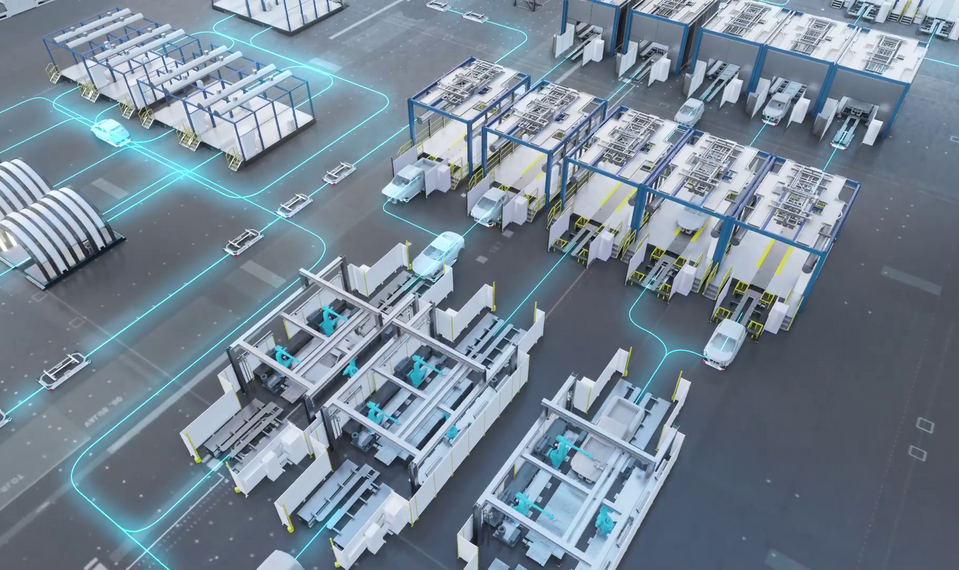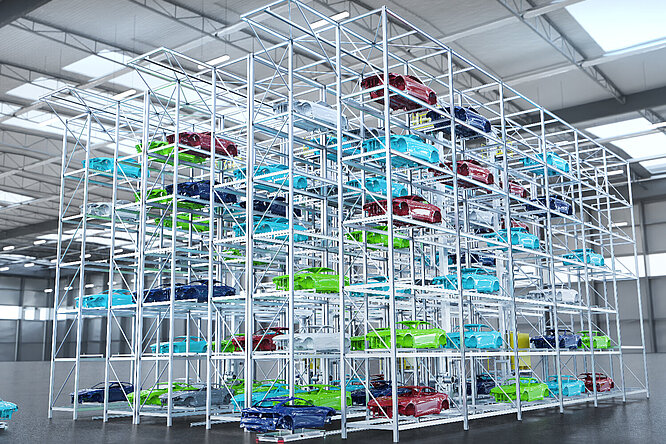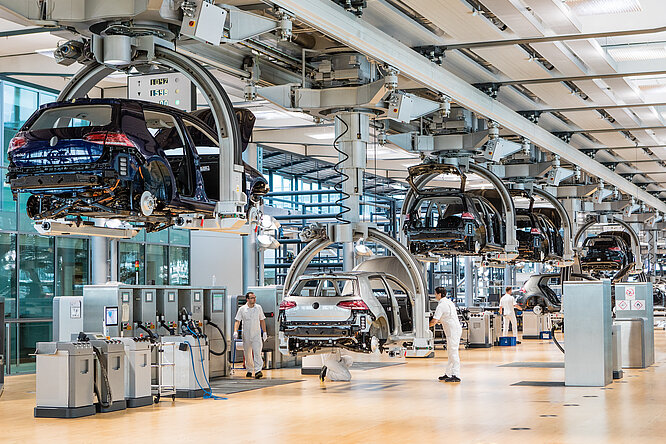Knowing what is actually happening

At the end of the painting process, the car body is checked in quality control to ensure it meets the standards. Only a permanent data pipeline can provide information on how well the individual process steps were carried out for each car. These insights are particularly valuable when they help automotive manufacturers identify errors and improve the performance, availability, and efficiency of their equipment. To achieve this, powerful software is needed —software that continuously delivers high-frequency data across the entire plant.

Data collection via control units
Every process in the paint shop generates data that is primarily used to control, monitor, and analyze the plant. One example is temperature measurement via a sensor. The data is transmitted to the control system to activate a heating element to regulate the temperature. In the past, such process data wasn’t retained and was therefore “lost,” as the control system worked only with current snapshots. The data is also used for display in a visualization. While the OPC interface suffices for many applications, it does not support fast processes that require real-time data.

See in detail what is happening
Data requirements in paint shops vary. In plant engineering, high-frequency data—i.e., data available every four milliseconds—is usually not required due to the long duration of processes such as drying. However, the situation is different in application technology. Here, robots and other equipment move much faster, requiring data within four to eight milliseconds. “This provides particularly interesting insights into the sealing area and paint application, as a robot generates around 100 million signal values per day. Manual, visual evaluation of this data is simply not possible,” explains Robin Heim, Product Owner at Dürr's Digital Factory. The digital analysis of high-frequency process data in the Visual Analytics module offers users the advantage of being able to see in detail what is happening in the process —like slow-motion playback.
The new way of storing data
To analyze processes over different time periods and understand, for example, why paint quality varies, intelligent data is needed. This is where the Data Recorder comes in. It writes data to a database and links measured values to precise timestamps. This turns collected process data (big data) into smart data. “Previous databases had technical limitations, such as limited storage space or a maximum retention period of 14 days. The new storage system is based on the specially developed ‘Time Series DataStore’ and is optimized for storing time series data,” adds Heim. It allows data to be stored for one to five years while requiring less storage space.
Dürr successfully completed the beta site for the Time Series DataStore at a major German automotive manufacturer. There, DXQequipment.analytics enables comprehensive analysis of past events in the station, identifying potential problems and providing valuable insights. This helps our customers to proactively develop solutions and improve future process quality.
Successful applications in sealing
A major issue in seam sealing is application failure. Gaps in the sealing seam are a quality defect, as they leave the vehicle vulnerable to corrosion. These defect are difficult to remedy retrospectively. Using DXQequipment.analytics, Dürr helped an OEM customer prove that this issue was associated with short-term spikes in application pressure. Based on this finding, automatic monitoring was developed in the Streaming Analytics module. This algorithm monitors application pressure in live operation and detects peaks that indicate areas where sealant was not applied. The advantages are clear: quality issues can be detected and corrected earlyreducing the need for manual rechecks.
Ultimately, end-to-end data pipelines with high-frequency data also enable the creation of body life records, in which all process parameters from the entire painting process are recorded.

